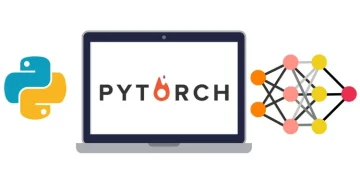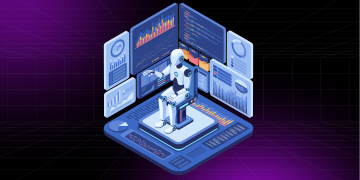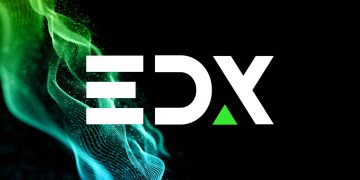Introduction
Over the past few years, PyTorch has emerged as one of the most popular deep learning frameworks in the research community. Known for its flexibility, ease of use, and support for dynamic computational graphs, PyTorch has quickly become the preferred tool for developing machine learning models, especially in academia. Its popularity is driven not only by its powerful capabilities but also by its unique design features that make it well-suited for experimentation and rapid prototyping—key aspects that researchers often prioritize.
This article explores why PyTorch has gained such widespread adoption in academic circles, focusing on its dynamic computation graph, intuitive API, debugging ease, and integration with research tools. We will also compare PyTorch with other deep learning frameworks like TensorFlow and discuss how PyTorch’s features have addressed the needs of academic researchers, from deep learning theory exploration to real-world applications.
1. The Rise of PyTorch in Academia
PyTorch’s increasing popularity can be traced back to several key advantages it offers over traditional deep learning frameworks. Although TensorFlow dominated the deep learning landscape for several years, PyTorch has rapidly gained traction in the academic community. Several factors contribute to this shift:
1.1 Intuitive and Pythonic Design
One of PyTorch’s main selling points is its Pythonic nature. The framework is designed to integrate seamlessly with Python, making it easy to use for those already familiar with the language. PyTorch is built on top of NumPy and integrates with many common scientific computing libraries, making it simple to transition from traditional machine learning models to more complex deep learning systems.
The API of PyTorch is intuitive and closely mimics Python’s syntax, which reduces the learning curve for researchers. TensorFlow, on the other hand, historically had a steeper learning curve due to its more complex architecture, particularly prior to the introduction of TensorFlow 2.0. PyTorch’s ease of use and fluid integration with Python libraries make it a natural choice for academic researchers who need a framework that fits into their everyday workflow.
1.2 Dynamic Computational Graph
PyTorch’s defining feature is its support for dynamic computational graphs (also called define-by-run graphs). This approach is different from the static computation graphs used in frameworks like TensorFlow (prior to TensorFlow 2.0), where the graph must be defined before running the model.
Dynamic Graphs and Flexibility
A dynamic graph means that the graph is constructed on the fly during execution, allowing the model to change its structure in real-time. This flexibility makes PyTorch particularly attractive for researchers who need to experiment with novel ideas, change the model architecture, or debug the code.
In contrast, static graphs require all operations to be predefined, which can limit flexibility. Researchers working with static graphs often need to recompile the graph whenever changes are made, which can slow down the experimentation process. This dynamic nature of PyTorch enables quick iteration, a key requirement for academic research.
Benefits in Research
Dynamic graphs allow for variable-length inputs and conditional branching within the model, which is particularly useful for tasks like sequence modeling, natural language processing (NLP), and reinforcement learning. Researchers can test different architectures and experiment with more complex model structures without the need for rebuilding or re-declaring the entire computation graph.
The ability to modify the model during runtime is indispensable when exploring new deep learning algorithms or architectures that require frequent adjustments.
1.3 Debugging Made Easy
Debugging is a critical part of any research project, and PyTorch’s dynamic nature allows for seamless debugging. Since the graph is built on the fly, debugging can be done directly in Python using standard debugging tools like pdb or print statements. This is a stark contrast to TensorFlow’s older versions, which required a more convoluted debugging process due to the static graph approach.
In PyTorch, researchers can use Python’s native debugging tools, track tensor values, and step through the code just like any other Python program. This makes it easier to track issues during model training, enabling a more efficient and less frustrating workflow.
1.4 Rich Ecosystem and Community Support
PyTorch’s success in academia can also be attributed to its rapidly growing ecosystem and strong community. Facebook’s support for PyTorch and its continuous development ensures that it stays up-to-date with the latest research. The framework is also open-source, which means it benefits from contributions from a vast community of researchers, developers, and practitioners.
PyTorch’s torchvision, torchaudio, torchtext, and torchmetrics libraries provide essential tools for working with image, audio, text, and evaluation metrics. These libraries offer highly optimized implementations of common tasks in computer vision, speech recognition, and natural language processing, making PyTorch a one-stop solution for researchers working in multiple domains.
2. PyTorch vs. Other Deep Learning Frameworks
2.1 TensorFlow and Keras
For many years, TensorFlow was considered the dominant deep learning framework, especially in industry. Its introduction of Keras (as a high-level API) in TensorFlow 2.0 provided some of the flexibility seen in PyTorch, but TensorFlow still lags behind in terms of ease of use and dynamic graph support.
PyTorch’s dynamic graph support sets it apart from TensorFlow’s earlier versions, which relied on static graphs. Although TensorFlow 2.0 introduced Eager Execution to support dynamic graphs, PyTorch had already established itself as the go-to framework for academic research by that time. TensorFlow 2.0 now supports dynamic graphs, but PyTorch’s head start has allowed it to maintain strong momentum in the research space.
2.2 MXNet
Apache MXNet is another deep learning framework with dynamic graph support, but it has not seen the same level of adoption in the research community as PyTorch. While MXNet has strong performance and scalability, PyTorch’s intuitive design, rich documentation, and Pythonic syntax make it more appealing to researchers who need flexibility and easy integration with other scientific libraries.
2.3 JAX
JAX, developed by Google, is another competitor that offers automatic differentiation and dynamic graph support. However, JAX’s syntax and design are more geared towards optimization and scientific computing, making it less accessible to researchers who want a framework dedicated to deep learning. While JAX has its strengths in gradient-based optimization, it lacks the out-of-the-box deep learning tools and integrations that PyTorch provides, such as pre-built models and datasets.

3. PyTorch in Research: Real-World Applications
3.1 Natural Language Processing (NLP)
In the field of Natural Language Processing (NLP), PyTorch has become a dominant force. Leading research models like BERT, GPT, and Transformer Networks were initially developed using PyTorch. The Hugging Face Transformers library, which has become a cornerstone of modern NLP research, was built primarily on PyTorch.
PyTorch’s support for dynamic graphs and variable-length sequences makes it particularly effective for NLP tasks, where sentence length and structure can vary greatly. Additionally, the flexibility in building custom layers or altering existing models is crucial for experimenting with new architectures and training methods.
3.2 Computer Vision
In the realm of computer vision, PyTorch has also made significant strides. Libraries like torchvision and Detectron2 (developed by Facebook) provide tools for object detection, image classification, and segmentation, which are critical tasks in visual understanding. PyTorch’s ability to easily modify and experiment with convolutional neural networks (CNNs) and generative models has been pivotal in the development of cutting-edge research in image processing.
In addition, the ability to experiment with transfer learning and fine-tuning pre-trained models is facilitated by PyTorch’s flexible architecture, making it the go-to framework for computer vision researchers.
3.3 Reinforcement Learning
In reinforcement learning (RL), PyTorch has gained a significant following due to its flexibility in implementing complex algorithms like Q-learning, Deep Q Networks (DQNs), and policy-gradient methods. The dynamic computation graph enables researchers to experiment with different RL algorithms and architectures without being constrained by predefined models.
PyTorch’s torchrl library and integration with OpenAI Gym provide convenient tools for RL researchers to build and evaluate their models.
4. The Future of PyTorch in Academia
As PyTorch continues to evolve, its influence in academia is likely to grow even further. The growing support for multi-GPU training, distributed computing, and cloud-based services within the PyTorch ecosystem makes it increasingly powerful for large-scale research projects. Furthermore, PyTorch’s seamless integration with popular tools like TensorBoard for visualization and ONNX for model interoperability only adds to its utility.
As deep learning research continues to push boundaries, PyTorch will likely remain a key player, enabling academics to explore novel ideas, create new architectures, and drive forward progress in fields like computer vision, NLP, and reinforcement learning.
Conclusion
PyTorch’s growing popularity in academia is a result of its unmatched flexibility, intuitive design, and dynamic graph support. These features make it the ideal framework for researchers who need to experiment with cutting-edge deep learning models and architectures. As PyTorch continues to evolve, its role in academic research will only increase, further solidifying its position as the framework of choice for deep learning experimentation and development.












































